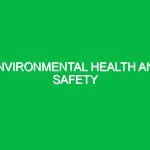Introduction
Chemical spills and leaks present significant risks to human health, safety, and the environment. The response to these incidents falls under the broader umbrella of Health, Safety, and Environment (HSE) management. Effective chemical spill and leak response involves a coordinated approach to mitigate hazards, safeguard responders, and protect the surrounding community and ecosystem. Understanding the nuances of these incidents is critical for anyone working in industries that handle hazardous materials.
In the HSE domain, a well-structured response plan is not just a regulatory requirement; it’s a moral obligation. A personal experience stands out vividly in my mind: during my tenure in environmental compliance, I witnessed a small-scale chemical spill during a routine operation. The response team acted swiftly, showcasing the importance of preparedness and training. This incident reinforced my belief that a proactive approach can prevent minor incidents from escalating into catastrophic events.
Understanding Chemical Spills and Leaks
To effectively manage chemical spill and leak response, it is essential to grasp what constitutes a chemical spill. Generally, a chemical spill refers to the accidental release of a hazardous substance into the environment, while a leak typically involves a slow, unintended escape of chemicals. Both scenarios can have dire consequences if not addressed promptly and appropriately.
The complexity of these incidents is compounded by the diverse range of chemicals that can be involved. From corrosive acids to toxic solvents, each substance carries its own set of risks and requires specific handling techniques.
Potential Hazards and Risks
Chemical spills and leaks can lead to various health and environmental risks, which can be categorized broadly into physical, chemical, and biological hazards.
Physical Hazards
Physical hazards primarily involve the risk of fire or explosion, particularly with flammable substances. For instance, a combustible liquid spill, if ignited, can lead to an uncontrollable fire, posing severe risks to personnel and infrastructure. Additionally, slips, trips, and falls are common in spill situations, creating immediate hazards for response teams.
Chemical Hazards
Chemical hazards are perhaps the most significant risks associated with spills and leaks. Exposure to toxic chemicals can result in acute and chronic health effects. For example, inhaling vapors from a spilled industrial solvent may lead to respiratory issues or long-term neurological damage. Moreover, some chemicals can cause skin burns or other injuries upon contact.
Biological Hazards
Although less common, biological hazards can emerge if a chemical spill interacts with biological agents. For instance, certain chemicals might create an environment conducive to pathogens, leading to potential health risks for both responders and the community.
Safety Precautions and Best Practices
To mitigate the risks associated with chemical spills and leaks, implementing robust safety precautions and best practices is essential. Here are some actionable strategies that can be adopted:
1. Training and Preparedness
Regular training sessions for employees are crucial. These should encompass safe handling of chemicals, spill response procedures, and the use of personal protective equipment (PPE). For instance, a training drill I participated in at a chemical manufacturing facility emphasized the importance of accountability and communication during a spill response.
2. Personal Protective Equipment (PPE)
Utilizing appropriate PPE is non-negotiable. Depending on the nature of the chemical involved, this might include gloves, goggles, respirators, and specialized clothing. Always ensure that PPE complies with regulatory standards and is regularly inspected.
3. Spill Containment and Cleanup
Having spill containment materials readily available—such as absorbent pads, booms, and neutralizing agents—can significantly enhance response efforts. For example, in an incident involving a hydrochloric acid spill, the quick deployment of neutralizing agents allowed the response team to neutralize the acid before it could cause environmental harm.
4. Emergency Response Plans
An effective emergency response plan should outline clear roles and responsibilities. This plan must be regularly reviewed and tested, ensuring all team members are familiar with their assigned tasks.
5. Communication and Reporting
Communication is key during a spill response. Establishing a clear chain of command and communication channels helps ensure timely reporting to regulatory agencies and emergency services.
Regulatory Standards Governing Chemical Spill and Leak Response
The landscape of chemical spill and leak response is shaped by various regulations and standards. These regulations often vary by region and industry, but some key frameworks include:
1. Occupational Safety and Health Administration (OSHA)
OSHA has established guidelines that require employers to maintain a safe workplace, including handling hazardous substances. The Hazard Communication Standard (HCS) mandates that employees are informed about the chemicals they work with, including their hazards.
2. Environmental Protection Agency (EPA)
The EPA oversees regulations pertaining to environmental protection. The Comprehensive Environmental Response, Compensation, and Liability Act (CERCLA), also known as the Superfund law, addresses the cleanup of hazardous waste sites and requires reporting of spills.
3. Department of Transportation (DOT)
The DOT regulates the transportation of hazardous materials, establishing standards for packaging, labeling, and reporting spills that occur during transport.
4. State and Local Regulations
In addition to federal regulations, state and local laws may impose additional requirements for spill response and reporting. Familiarizing oneself with these regulations is vital for compliance and effective response.
Conclusion
Chemical spill and leak response requires a multi-faceted approach that prioritizes safety and environmental protection. By understanding the potential hazards and implementing effective safety precautions and best practices, organizations can significantly reduce the risks associated with these incidents.
As industries continue to evolve and new chemicals are introduced, the importance of training, preparedness, and adherence to regulatory standards cannot be overstated. Every organization must commit to fostering a culture of safety, ensuring that its personnel are equipped to handle chemical spills and leaks effectively. After all, preparedness today can prevent disasters tomorrow.


